Table of Contents
Several weeks ago I published my detailed review of the 2022 Asus ROG Flow X13, one of the most powerful ultrabooks available in stores today. In the meantime, I also reviewed the 2023 Flow X13 series.
This article follows up on that review, and goes over two side topics that potential buyers will be interested in: the performance of the integrated AMD Radeon 680M iGPU in this compact chassis, as well as how this Flow X13 performs when connected to the ROG XG Mobile external GPU enclosure.
These two matter because Asus are going to offer in stores a ROG Flow X13 GV301RA configuration in the near future, built on the Ryzen 9 6900HS processor (or Ryzen 7 6800HS in some regions), 16 GB of RAM and the RDNA2-based AMD integrated GPU, without any Nvidia dGPU. This is going to be more affordable than the dGPU configurations, and something many could consider for everyday multitasking.
Then, the ROG XG Mobile comes as an extra, something you could connect to the Flow when playing games or running demanding GPU workloads. For our tests, we’ve used the 2021 ROG XG Mobile with an Nvidia RTX 3080 in it, but an updated 2022 XG Mobile is also going to be available at some point, with an AMD Radeon RX 6850M XT in it.
Before we proceed, keep in mind that I ran all our tests on the software available for the Flow X13 as of mid-March 2022 (BIOS 311, Nvidia 511.79 drivers, 5.0.22.0 Armory Crate). Some aspects might change with later updates.
AMD Radeon 680M performance on the ROG Flow X13
Let’s look at what you should expect in performance from a potential ROG Flow X13 GV301RA configuration with a Ryzen 9 6900HS processor and AMD Radeon RX 680M graphics.
For that, we set our review unit on Eco mode in Armory Crate, which disables the dGPU.
The CPU’s performance in sustained CPU tests doesn’t change from what we’ve already covered in the review. This here is a 50W implementation of the Ryzen 9 6900HS, but with a slightly choked thermal design, so you should consider bumping up the back of the laptop or placing this on a cooling fan for extended sustained activities.
The behavior in GPU-oriented tasks changes in this configuration that relies solely on the Radeon 680M iGPU. We ran the entire suite of tests and benchmarks, on the stock Turbo profile in Armoury Crate, at FHD 1920 x 1080 px resolution for consistency with our other tests, and with the laptop’s back raised up from the desk, in order to prevent any overheating or throttling.
Here’s what we got.
- 3DMark 13 – Fire Strike: 6871 (Graphics – 7532, Physics – 22433, Combined – 2547);
- 3DMark 13 – Night Raid: 26152 (Graphics – 31939, Physics – 12905);
- 3DMark 13 – Time Spy: 2806 (Graphics – 2523, CPU – 7739);
- Uniengine Superposition – 1080p Extreme: 1452;
- Uniengine Superposition – 1080p Medium: 4795;
- PassMark 10: Rating: 6464(CPU: 24147, 3D Graphic: 5592, Memory:2469, Disk: 25865);
- PCMark 10: 6696 (Essentials – 10520, Productivity – 9321, Digital Content Creation – 8308);
- GeekBench 5.4.3 64-bit: Single-Core: 1547, Multi-core: 9047;
- CineBench R15 (best run): CPU 2165 cb, CPU Single Core 251 cb;
- CineBench R20 (best run): CPU 5049 cb, CPU Single Core 606 cb;
- CineBench R23: CPU 12965 cb (best run), CPU 12159 (10 min loop test), CPU Single Core 1542 CB (best run);
- x265 HD Benchmark 64-bit: 29.16 s.
And here are some workstation benchmarks, on the same Turbo profile, with the back of the laptop bumped off the desk:
- Blender 3.01 – BMW Car scene – CPU Compute: 3m 11s;
- Blender 3.01 – Classroom scene – CPU Compute: 7m 34s;
- PugetBench – DaVinci Resolve: -;
- PugetBench – Adobe Afert Effects: 592;
- PugetBench – Adobe Photoshop: 930;
- PugetBench – Adobe Premiere: 360;
- SPECviewperf 2020 – 3DSMax: 36.37;
- SPECviewperf 2020 – Catia: 21.63;
- SPECviewperf 2020 – Creo: 44.49;
- SPECviewperf 2020 – Energy: 1.34;
- SPECviewperf 2020 – Maya: 94.68;
- SPECviewperf 2020 – Medical: 18.57;
- SPECviewperf 2020 – SNX: 52.85;
- SPECviewperf 2020 – SW: 46.28.
These are solid results for an ultrabook and fair results for a Ryzen 9 6900HS implementation. For the GPU and combined tests, our findings on this X13 are on par and even better in some cases than the results measured in the larger Zephyrus G14 chassis. The G14 keeps an edge in the CPU-heavy loads, though, because of the higher-power settings and superior thermal design.
As for the competing Core i9 + Iris Xe platform available in devices such as the ROG Flow Z13 and other ultraportables, that has an edge over the AMD hardware in IPC and CPU single/multi-core loads, but trails it by a 20-50% margin in the GPU tasks. AMD has the upper hand in the iGPU segment at this point, with their RDNA2 based Radeon 680M chip available with the Ryzen 6000 7/9 H and the Ryzen 7 6800U platforms – check out our review of the 6800U-powered ZenBook S 13 for details.
It’s also important to acknowledge here that this compact FLow X13 design allows for up to 50 W on CPU sustained power and around 45W of sustained combined CPU+GPU power. That means you can expect performance within 90+% of the platform’s capabilities in combined loads and in games, and within 80+% in multi-threaded CPU loads. This is also going to perform better than other AMD ultraportable designs with a less-advanced cooling module and lower power settings, as a result. You’ll find how 50W and 25W implementations of the Ryzen 9 + Radeon 680M iGPU fare against each other in this article.
I’ll also add that the fans ramp up to ~45 dB in sustained loads on this iGPU only Flow X13 implementation, about on par with our findings on the dGPU variants. The components and the chassis run at lower temperatures, though. Furthermore, quieter profiles are also available with the Performance and Silent mode, with a drop in capabilities.
Update: Here are my thoughts on the updated 2023 Asus ROG Flow X13 GV302 series.
AMD Radeon 680M (RDNA2) gaming performance on the Flow X13
Next, let’s look into some games.
Here’s what we got on Medium settings at FHD+ resolution. I’ve added a couple of other Radeon 680M and Iris Xe implementations for comparison, as well as the Vega 8 chip previously available in 2021 AMD laptops without a dGPU.
| Medium settings | Flow X13 2022 – R9 + Radeon 680M ~45W, FHD+ resolution |
Flow Z13 2022 – i9 + Iris Xe ~50W, FHD+ resolution |
Zephyrus G14 2022 – R9 + Radeon 680M 50+W, FHD+ resolution |
Zephyrus G14 2021 – R9 + Vega 8 45W, FHD resolution |
ZenBook 14X – Core i9 + Iris Xe 35+W, FHD+ resolution |
| Far Cry 5 (DX 11, Normal Preset, TAA) |
45 fps (34 fps – 1% low) | 30 fps (25 fps – 1% low) | 43 fps (38 fps – 1% low) | 23 fps (20 fps – 1% low) | 33 fps (29 fps – 1% low) |
| Shadow of Tomb Raider (DX 12, Medium Preset, TAA) |
37 fps (22 fps – 1% low) | 22 fps (14 fps – 1% low) | 35 fps (24 fps – 1% low) | 22 fps (16 fps – 1% low) | 24 fps (17 fps – 1% low) |
| The Witcher 3: Wild Hunt (DX 11, Medium Preset, Hairworks Low) |
50 fps (40 fps – 1% low) | 34 fps (20 fps – 1% low) | 47 fps (34 fps – 1% low) | 25 fps (20 fps – 1% low) | 40 fps (22 fps – 1% low) |
With most games, the Radeon 680M delivers about 2x the performance of the previous Vega 8 chip. We’re also looking at ~20-40% higher-framerates versus the Iris Xe chip in the Flow Z13.
However, take these with a grain of salt, as all the Flow and Zephyrus laptops are tested on their ECO modes, with disabled dGPUs. Based on our tests of the ZenBook 14X which is a device built specifically on an Intel i9 without a dGPU, optimized drivers can lead to 5-10% improved framerates over the Flow X13 even at lower power settings. We can expect similar findings for the retail Flow X13 GV301RA models with drivers specifically optimized for the iGPU-only configuration.
These aside, here are a couple more games at FHD resolution and Low graphics settings, compared to a handful of other iGPU platforms from AMD and Intel.
| Low settings | Flow X13 2022 – R9 + Radeon 680M ~45W, FHD+ 1200p |
Flow Z13 2022 – i9 + Iris Xe ~50W, FHD+ 1200p |
Zephyrus G14, R9 6900HS + R 680M 50+W, FHD 1080p |
Zephyrus G14, R9 5900HS + Vega 8 45+W, FHD 1080p |
Zenbook 14X, i9 12900H + Iris Xe 35+W, FHD+ 1080p |
| Bioshock Infinite (DX 11, Low Preset) | 150 fps (92 fps – 1% low) | 97 fps (61 fps – 1% low) | 117 fps (74 fps – 1% low) | 87 fps (67 fps – 1% low) | 105 fps (66 fps – 1% low) |
| Dota 2 (DX 11, Best Looking Preset) | 78 fps (52 fps – 1% low) | 76 fps (64 fps – 1% low) | 96 fps (66 fps – 1% low) | 68 fps (54 fps – 1% low) | 84 fps (65 fps – 1% low) |
| Far Cry 5 (DX 11, Low Preset, no AA) | 50 fps (37 fps – 1% low) | 35 fps (30 fps – 1% low) | 53 fps (47 fps – 1% low) | 27 fps (24 fps – 1% low) | 37 fps (30 fps – 1% low) |
| Far Cry 6 (DX 12, Low Preset, no AA) | 46 fps (34 fps – 1% low) | 29 fps (24 fps – 1% low) | 48 fps (35 fps – 1% low) | – | 31 fps (26 fps – 1% low) |
| Shadow of Tomb Raider (DX12, Lowest Preset, no AA) | 65 fps (46 fps – 1% low) | 36 fps (23 fps – 1% low) | 67 fps (42 fps – 1% low) | 35 fps (31 fps – 1% low) | 42 fps (23 fps – 1% low) |
| The Witcher 3: Wild Hunt (DX 11, Low Preset, Hairworks Off) | 57 fps (42 fps – 1% low) | 42 fps (23 fps – 1% low) | 55 fps (43 fps – 1% low) | 27 fps (20 fps – 1% low) | 44 fps (28 fps – 1% low) |
The results are all in favor of the Radeon 680M chip, but the gains vary in percentage between the older and the more recent and more demanding titles.
All in all, expect competitive performance from the iGPU only configurations of the ROG Flow X13, at a lesser price than what’s asked for the variants with Nvidia dGPUs.
At the same time, though, the availability of the RV301RA configurations might be limited in some regions, and Asus might even decide on offering those with a Ryzen 5 chip and lower-tier Radeon 670M graphics, which only offers the performance of a Vega 8 iGPU from previous years. The Ryzen 7 6800HS and 9 6900HS versions offer the Radeon 680M iGPU, though, if you can find them in your area.
ROG XG Mobile performance on the Flow X13
Let’s say you are planning on getting a ROG Flow X13 but need more GPU performance than what the compact chassis can offer. For that, the Flow series is designed to pair with the ROG XG Mobile external GPU enclosure.
The ROG XG Mobile is a compact external GPU enclosure with ports, a power source, a vapor chamber thermal module inside, and the ability to connect to ROG Flow devices via a proprietary port designed to eliminate the downsides of connecting an eGPU via a regular USB-C port. This port charges the laptop and handles video/data signal, so you don’t need to connect other power sources or cables to the Flow when using the XG Mobile eGPU.
For these tests, I’m using the 2021 generation XG Mobile with an RTX 3080 Laptop inside, designed to run at up to 150W. When connected to the XG Mobile unit, the system automatically disables the dGPU inside the Flow, allowing for the dGPU in the XG Mobile to handle all the graphics demands. This way, the laptop itself remains in charge of handling the CPU, memory, and storage.
Jfyi, an updated 2022 XG Mobile built on AMD Radeon GPUs is also coming at some point, but I didn’t get to properly test it yet. Might update in the future.
Ok, so first off, benchmarks.
We ran the entire suite of tests and benchmarks with the XG Mobile connected and the signal sent back to the laptop’s display. I also bumped the back of the laptop from the desk, in order to improve the airflow into the fans and prevent any CPU throttling with sustained loads.
We used the stock Turbo profile in Armoury Crate, and set the screen at FHD 1920 x 1080 px resolution for consistency with our other tests.
- 3DMark 13 – Fire Strike: 24607 (Graphics – 28153, Physics – 25751, Combined – 12235);
- 3DMark 13 – Port Royal: 7339;
- 3DMark 13 – Time Spy: 11499 (Graphics – 12071, CPU – 9068);
- Uniengine Superposition – 1080p Extreme: 7785;
- Uniengine Superposition – 1080p Medium: 19023;
- PassMark 10: Rating: 4922 (CPU mark: 25363, 3D Graphics Mark: 15537, Disk Mark: 15817);
- PCMark 10: 6871 (Essentials – 9936, Productivity – 9451, Digital Content Creation – 9374);
- CineBench R15 (best run): CPU 2184 cb, CPU Single Core 253 cb;
- CineBench R20 (best run): CPU 5079 cb, CPU Single Core 611 cb;
- GeekBench 5.4.3 64-bit: Single-Core: 1602, Multi-core: 9326;
- CineBench R23: CPU 12979 cb (best run), CPU 12173 (10 min loop test), CPU Single Core 1542 CB (best run);
- x265 HD Benchmark 64-bit: 29.66 s.
And here are some workstation benchmarks, on the same Turbo profile and the back of the laptop bumped off the desk:
- Blender 3.01 – BMW Car scene- CPU Compute: 3m 13s ;
- Blender 3.01 – BMW Car scene- GPU Compute: 20s (CUDA), 12s (Optix);
- Blender 3.01 – Classroom scene – CPU Compute: 7m 19s;
- Blender 3.01 – Classroom scene – GPU Compute: 37s (CUDA), 21s (Optix);
- PugetBench – DaVinci Resolve: 937;
- PugetBench – Adobe Afert Effects: 720;
- PugetBench – Adobe Photoshop: 919;
- PugetBench – Adobe Premiere: 667;
- SPECviewperf 2020 – 3DSMax: 130.42;
- SPECviewperf 2020 – Catia: 65.24;
- SPECviewperf 2020 – Creo: 72.91;
- SPECviewperf 2020 – Energy: 27.66;
- SPECviewperf 2020 – Maya: 306.57;
- SPECviewperf 2020 – Medical: 34.49;
- SPECviewperf 2020 – SNX: 20.52;
- SPECviewperf 2020 – SW: 232.78;
- V-Ray Benchmark: CPU – 9092 vsamples, GPU CUDA – 1351 vpaths, GPU RTX – 1761 vpaths.
Once more, these are some solid results.
If we’re comparing these findings to a Ryzen 9 + RTX 3080 165 W notebook implementation in one of the better 2021 designs, the Lenovo Legion 7, this Flow X13 + XG Mobile (with RTX 3080 150W) combo ends up about 5-10% behind in the GPU tests, and surprisingly close in the CPU tests, despite the fact that the Ryzen 9 processor is only a limited 50W design in the compact Flow X13 chassis. Impressive!
As for how this Flow X13 + XG Mobile combo fares in comparison to its main competitor, the Flow Z13 built on an Intel i9-12900H, we’ll be covering that in a separate article. In just a few words, the Intel platform has an edge in the CPU and combined loads, and the two are about neck in neck in the GPU tests. However, the Flow Z13 runs cooler, due to its superior thermal design.
Speaking of, the fans ramp up to 45-46 dB on Turbo on the X13 + XG Mobile combo, with the laptop itself rarely going past 40 dB, but with the fan in the XG Mobile unit ramping up to 45-46 dB.
Switching to the Performance mode tames down to fans to about 40 dB, with a 10-20% performance hit, while switching on Silent limits the fan noise to 35 dB, once more with most of the noise coming from the XG Mobile.
I ran some benchmarks on this Silent mode, so you’ll know what to expect in this case:
- 3DMark 13 – Fire Strike: 14017 (Graphics – 13796, Physics – 18889, Combined – 11066);
- 3DMark 13 – Port Royal: 5946;
- 3DMark 13 – Time Spy: 9091 (Graphics – 9370, CPU – 7783);
- Uniengine Superposition – 1080p Extreme: 6195;
- Uniengine Superposition – 1080p Medium: 8020;
- CineBench R20 (best run): CPU 4600 cb, CPU Single Core 592 cb;
- x265 HD Benchmark 64-bit: 34.21 s;
- Blender 3.01 – BMW Car scene- CPU Compute: 3m 46s ;
We’re looking at a 20-25% impact over the CPU performance, but up to 60% downside on the GPU side in some tests. This mode is a hard sell based on these results, even with the very quiet fans, but I expect later software to improve the GPU behaviour, as the XG Mobile scored much better on the same Silent profile when paired to the Flow Z13 unit.
XG Mobile Gaming performance
One final aspect I will cover here is the gaming performance of this Asus ROG Flox X13 2022 + XG Mobile combo.
We ran our tests on the laptop’s internal display and on an external screen connected to the XG Mobile unit. However, something’s not working right with the current drivers on our samples, as the system only allocates a limited amount of power to the external dGPU even on the Turbo mode. The RTX 3080 in the XG Mobile should run at up to 150W, but for some reason, it only averaged around 120-125W in these gaming tests. That’s despite the fact that it ran at proper power in the benchmarks above, and the fact that the same XG Mobile runs at 150W ing ames when hooked into the ROG Flow Z13 (which we’re covering in a separate article).
With that in mind, takes these results with a lump of salt, and expect the real-life gaming results to be somewhat closer to what we got with the Z13 (which I’ve also included down below).
| ROG Flow X13, Ryzen 9 6900HS, FHD+ Turbo |
ROG Flow Z13, Core i9-12900H, FHD+ Turbo |
ROG Flow X13, Ryzen 9 6900HS, FHD+ Turbo, external |
ROG Flow Z13, Core i9-12900H FHD+ Turbo, external |
ROG Flow X13, Ryzen 9 6900HS, QHD Turbo, external |
ROG Flow Z13, Core i9-12900H QHD Turbo, external |
|
| Battlefield V (DX 12, Ultra Preset, RTX OFF) |
138 fps (79 fps – 1% low) | 162 fps (87 fps – 1% low) | – | – | 126 fps (75 fps – 1% low) | 142 fps (95 fps – 1% low) |
| Cyberpunk 2077 (DX 12, Ultra Preset, RTX OFF) |
72 fps (62 fps – 1% low) | 56 fps (45 fps – 1% low) | 66 fps (50 fps – 1% low) | 75 fps (61 fps – 1% low) | 47 fps (37 fps – 1% low) | 51 fps (41 fps – 1% low) |
| Doom Eternal (Vulkan, Ultra Preset) |
186 fps (130 fps – 1% low) | 215 fps (134 fps – 1% low) | 252 fps (182 fps – 1% low) | 298 fps (194 fps – 1% low) | 206 fps (152 fps – 1% low) | 222 fps (165 fps – 1% low) |
| Far Cry 6 (DX 12, Ultra Preset, TAA) |
75 fps (57 fps – 1% low) | 97 fps (73 fps – 1% low) | – | – | 79 fps (56 fps – 1% low) | 86 fps (51 fps – 1% low) |
| Far Cry 5 (DX 11, Ultra Preset, SMAA) |
102 fps (72 fps – 1% low) | 128 fps (88 fps – 1% low) | 105 fps (77 fps – 1% low) | 138 fps (101 fps – 1% low) | 102 fps (66 fps – 1% low) | 120 fps (86 fps – 1% low) |
| Red Dead Redemption 2 (DX 12, Ultra Optimized, TAA) |
101 fps (70 fps – 1% low) | 112 fps (78 fps – 1% low) | – | – | 86 fps (52 fps – 1% low) | 94 fps (58 fps – 1% low) |
| Shadow of Tomb Raider (DX 12, Highest Preset, TAA) |
105 fps (65 fps – 1% low) | 125 fps (81 fps – 1% low) | 112 fps (81 fps – 1% low) | 135 fps (92 fps – 1% low) | 98 fps (76 fps – 1% low) | 103 fps (80 fps – 1% low) |
| The Witcher 3: Wild Hunt (DX 11, Ultra Preset, Hairworks On 4) |
126 fps (95 fps – 1% low) | 138 fps (72 fps – 1% low) | 132 fps (75 fps – 1% low) | 154 fps (92 fps – 1% low) | 105 fps (72 fps – 1% low) | 117 fps (86 fps – 1% low) |
- Battlefield V, Cyberpunk, Doom, Witcher 3 – recorded with Fraps/in-game FPS counter in campaign mode;
- Far Cry 5, 6, Metro, Red Dead Redemption 2, Tomb Raider games – recorded with the included Benchmark utilities;
- Red Dead Redemption 2 Optimized profile based on these settings.
Those above are rasterization tests, and here are some results for RTX titles with and without DLSS.
| ROG Flow X13, Ryzen 9 6900HS, FHD+ Turbo, internal |
ROG Flow X13, Core i9-12900H, FHD+ Turbo, internal |
ROG Flow X13, Ryzen 9 6900HS, QHD Turbo, external |
ROG Flow Z13, Core i9-12900H, QHD Turbo, external |
|
| Battlefield V (DX 12, Ultra Preset, RTX ON, DLSS OFF) |
95 fps (68 fps – 1% low) | 101 fps (67 fps – 1% low) | 75 fps (51 fps – 1% low) | 80 fps (62 fps – 1% low) |
| Cyberpunk 2077 (DX 12, Ultra Preset + RTX, no DLSS) |
34 fps (27 fps – 1% low) | 35 fps (26 fps – 1% low) | – | – |
| Cyberpunk 2077 (DX 12, Ultra Preset + RTX, DLSS Balanced) |
64 fps (51 fps – 1% low) | 53 fps (41 fps – 1% low) | 49 fps (37 fps – 1% low) | 54 fps (44 fps – 1% low) |
| Doom Eternal (DX 12, Ultra Preset, RTX ON, DLSS Quality) |
142 fps (100 fps – 1% low) | 164 fps (114 fps – 1% low) | 148 fps (113 fps – 1% low) | 164 fps (129 fps – 1% low) |
| Far Cry 6 (DX 12, Ultra Preset + DXR reflections / shadows) |
66 fps (49 fps – 1% low) | 74 fps (46 fps – 1% low) | 65 fps (52 fps – 1% low) | 73 fps (43 fps – 1% low) |
| Shadow of Tomb Raider (DX 12, Highest Preset, TAA, RTX Ultra) |
75 fps (450 fps – 1% low) | 78 fps (52 fps – 1% low) | 64 fps (45 fps – 1% low) | 62 fps (44 fps – 1% low) |
Once more, take these with a lump of salt, as explained above.
Nonetheless, once Asus figures out the drivers, I still expect the Intel configuration to have an advantage of up to 15% in games at FHD+ resolution, and lower at QHD, based on our previous tests of similar AMD 6000/Intel 12th-gen implementations with the same kind of RAM and GPU. Plus, the Z13 has an advantage in cooling.
Let’s go through some performance logs before we wrap this up.
On Turbo, the Ryzen 9 CPU averages 30-35W of power between the tested titles, while the RTX 3080 GPU only runs at around 120-125W, and not up to 150W as the XG Mobile is designed to. I could not figure out what caused this issue, I’ve tried several Nvidia drivers, uninstalled Geforce Experience, etc., but nothing worked.
This results in the limited gaming performance, but also lower GPU temperatures and quieter fans at around 40-42 dB on this Turbo mode than I’d expect. based on our findings on the Z13, with the final units, the GPU is going to run hotter, closer to 85-87 degrees Celsius, and the fans will ramp up to 45-46 dB at head level.
Another important aspect worth mentioning here is the noticeable difference in CPU temperatures when keeping the laptop on the desk and when bumping it up in order to improve the airflow. Here’s our sample on Turbo with the laptop on the desk, when the CPU averages temperatures in the mid-90s C.
And here’s the same combo with the back of the laptop bumped up, when the CPU temperatures drop by 5-10 degrees C.
As explained in the review, the convertible design of the Flow X13 only allows for slim rubber feet on the bottom of the laptop, as thicker feet would have prevented the screen from converting to 360-degrees. As a result, the fans’ intakes are choked up while having this on a desk, and bumping up the back impacts the internal temperatures in a significant way, as well as the performance to some extent.
I also tested this Flox X13 + XG Mobile combo on the Performance mode, which limits the fan noise to around 40 dB (with the XG mobile producing the majority of that noise). The CPU still runs at around 30W in this mode and temperatures of ~95C with the laptop sitting on the desk, while the GPU runs at 110-115W, with high temperatures around the 86+ throttling point.
Once more, bumping the back of the laptop from the desk is going to help lower the CPU temperatures, but the GPU temperatures remain unchanged.
Bottom point, while we can’t draw proper conclusions on the gaming capabilities of this Flow X13 + XG Mobile combo based on our test unit, I must warn you about the high CPU and GPU temperatures you should expect with these two.
With the laptop sitting on the desk, expect 95C on the CPU and 85+C on the GPU with a properly running Turbo mode that allows the GPU to run closer to its designed max power (150W for this 3080 variant, 165W for the 2022 Radeon RX 6850 XT model). Bumping up the laptop in order to improve the airflow into the fans will have a positive impact on the CPU temperatures, but there’s no way to improve the GPU temperatures.
I will also add that the ROG Flow X13 is most likely going to get USB4 support in the next couple of months, and that should allow compatibility with other eGPU enclosures beside the XG Mobile, something AMD devices did not offer so far.
It’s too early to tell how current Thunderbolt eGPUs are going to work on USB4, but I have some hopes they will do well. Of course, the USB-C connection is somewhat limited in comparison to the dedicated connector used by the XG Mobile with the Flow series, but based on past tests, the limitations are compensated by the fact that you could use a full-power desktop-grade GPU with some of those eGPU units. Plus, you can output the signal to an external display connected to the eGPU, and not back to the laptop’s 13-inch screen, in order to alleviate one more drawback of the USB-C connection.
Anyway, this wraps-up what I wanted to cover in this article. Looking for your feedback and questions down below.

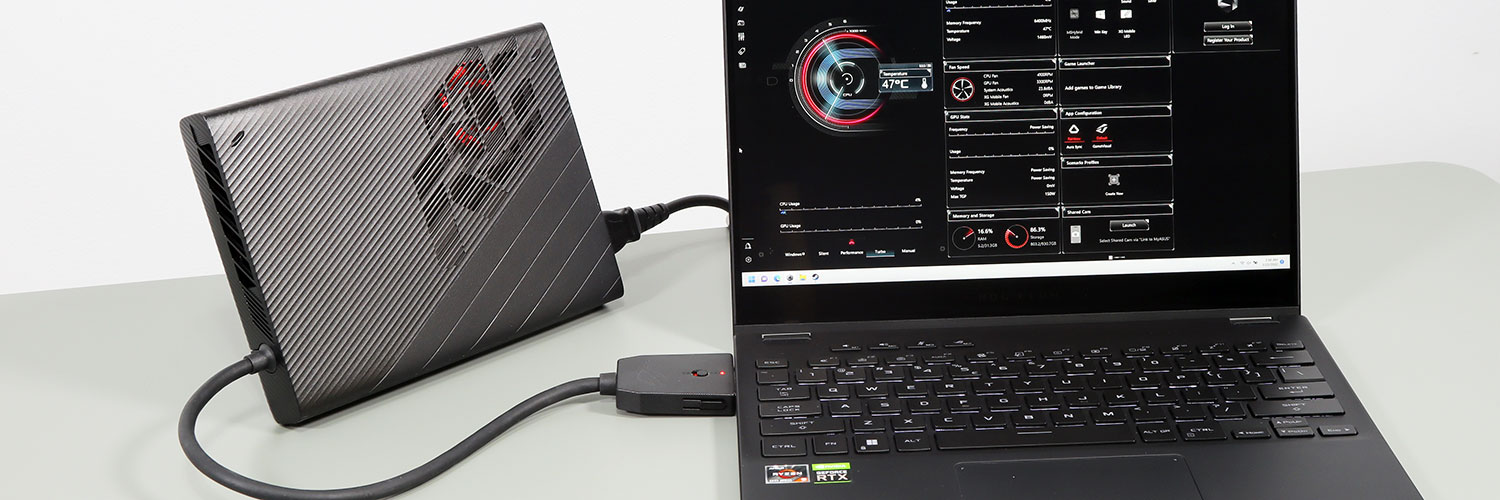
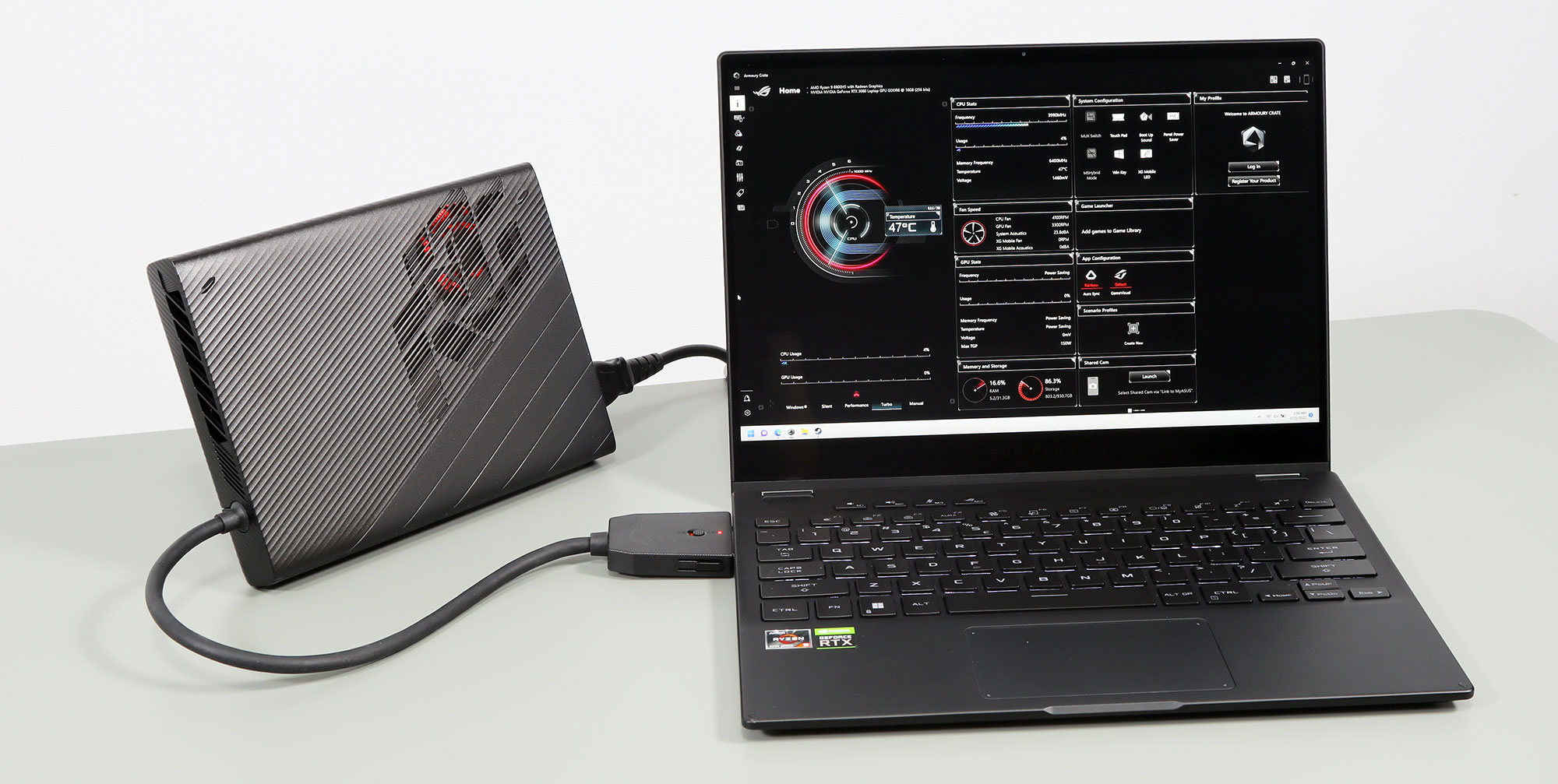
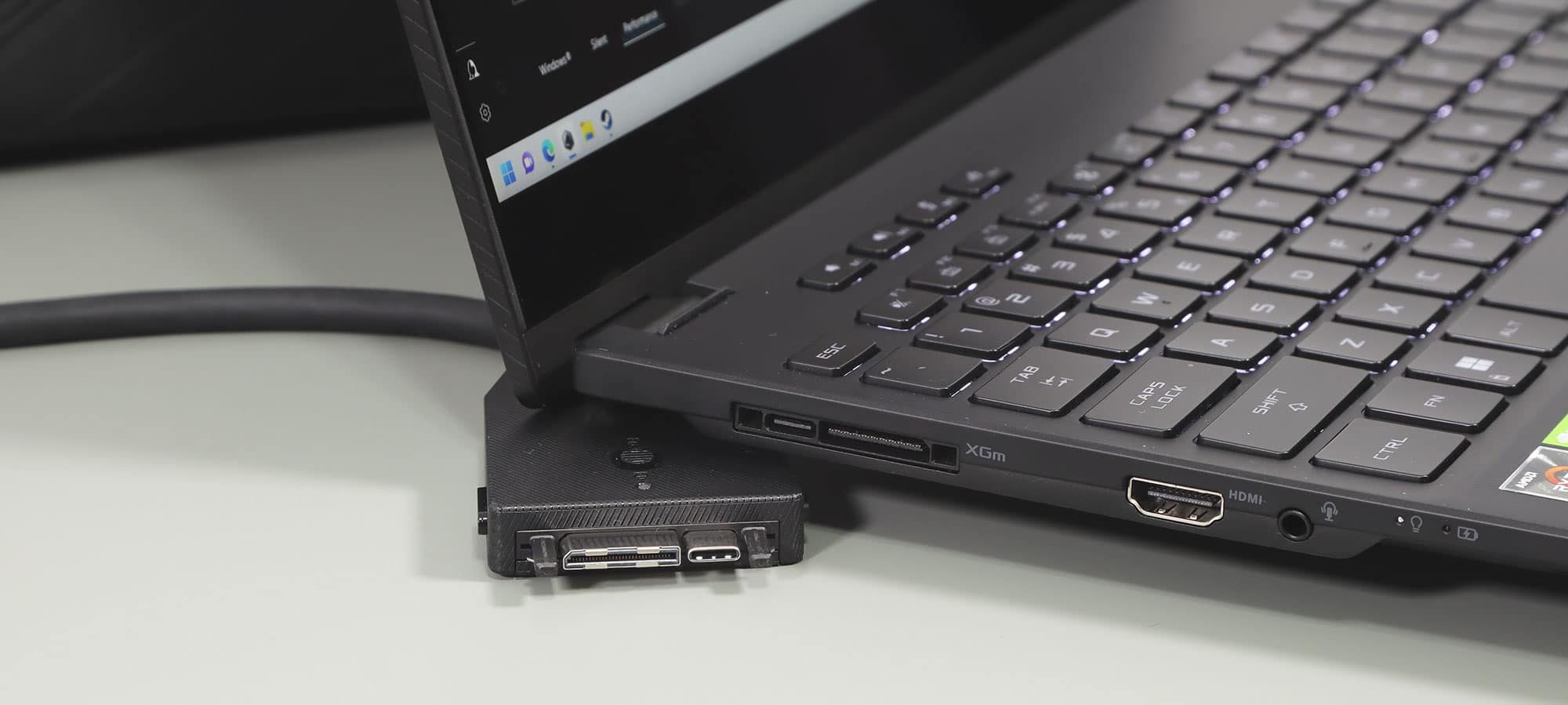
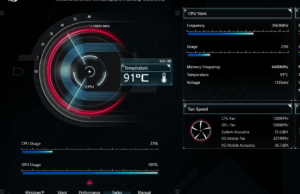
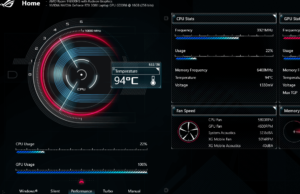
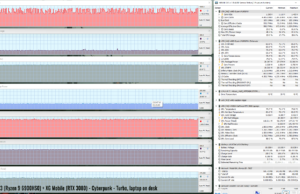
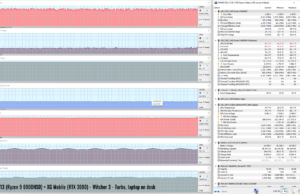
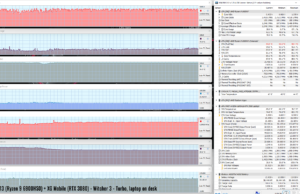
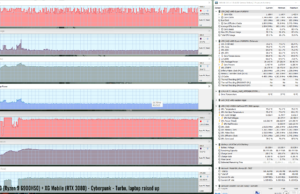
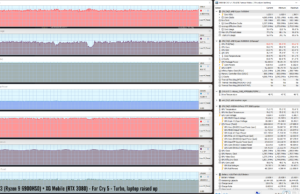
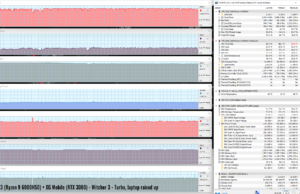
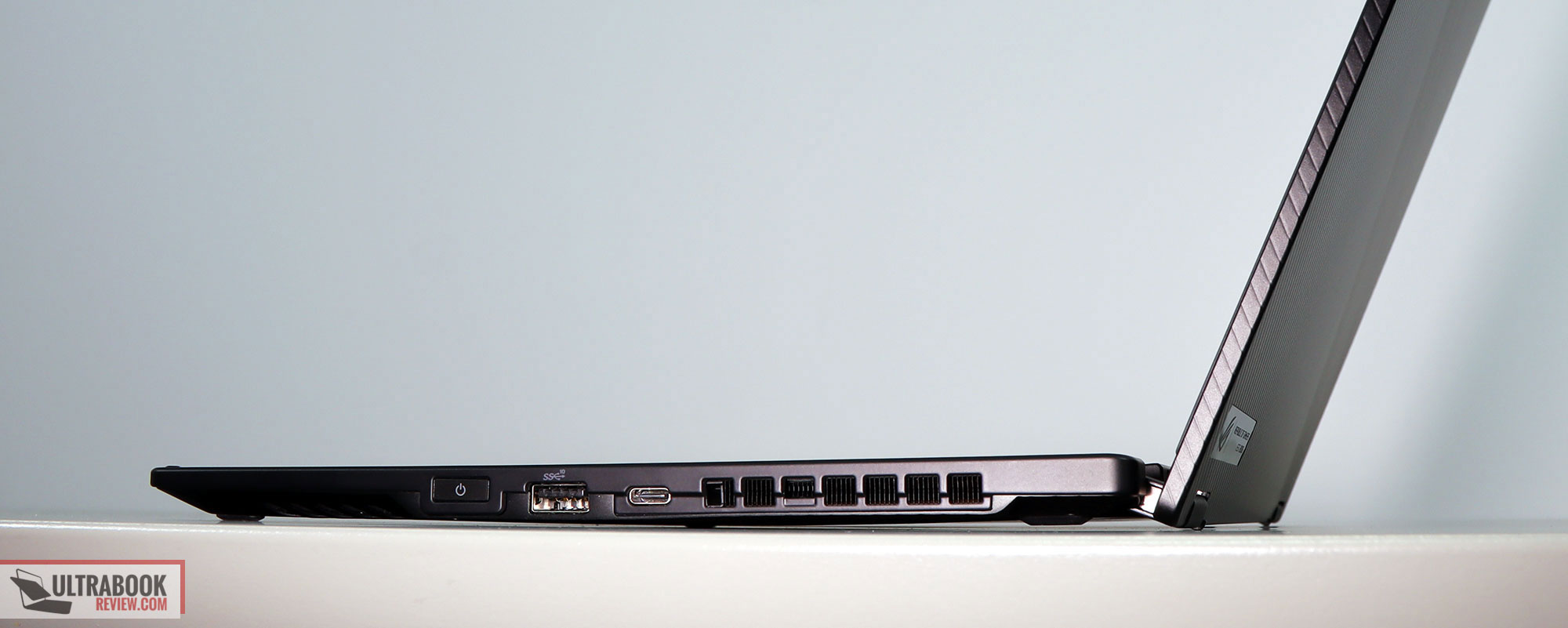
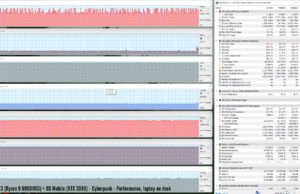
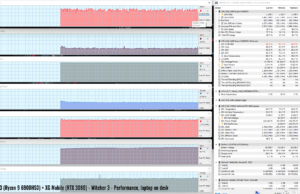
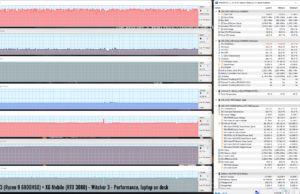
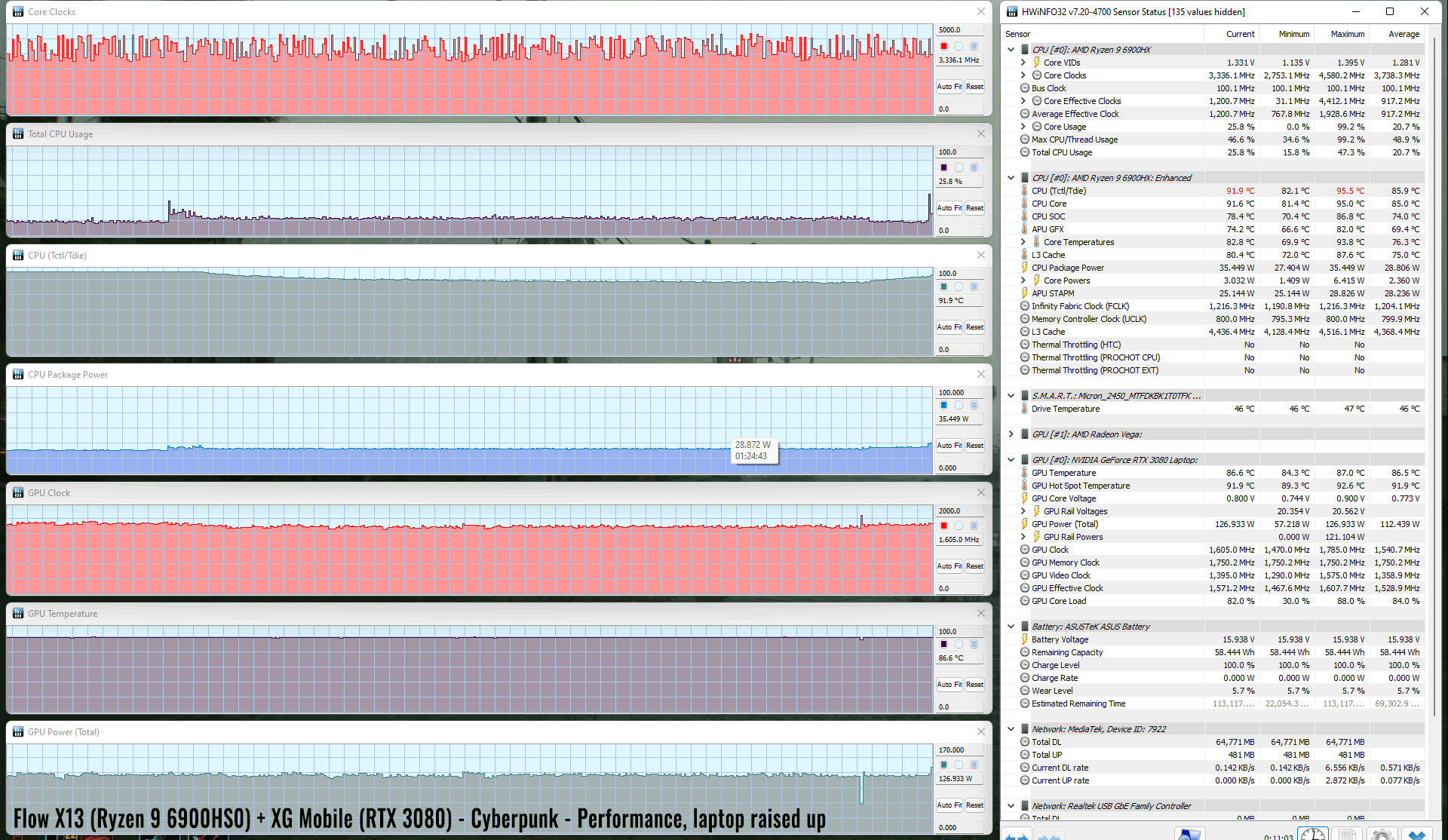




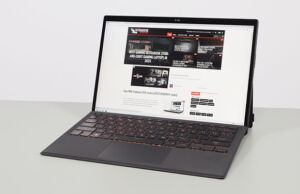






George
April 8, 2022 at 9:39 am
Good kit, but company that supports the Russian Market is off my shopping list, too bad… Same as acer or lenovo, waiting for Alpha 17
LHPSU
April 12, 2022 at 5:06 am
Is throttling mitigated when running games with the eGPU (vs the built-in GPU)?
Andrei Girbea
April 12, 2022 at 9:31 am
which throttling?
lee
June 1, 2022 at 4:36 am
are you sure support usb4(40gbps)?
it is important me
pepper
March 16, 2023 at 7:26 am
the egpu is using a custom pcie4x8 connector with higher bandwidth than usb4/thunderbolt.
Hans Van Nuffel
June 16, 2022 at 9:48 pm
I had a similar issue with my XG Mobile rtx 3080, it maxed out at around 115-125 watts in every game I played. Finally found a solution on Reddit: ddu the Nvidia drivers, then attach the XG mobile without locking the connector. Then first install the NVIDIA driver, reboot afterwarrds, only then lock the EGPU connector so it detects the XG mobile after a restart. From then on I got 150watts in all of my games in turbo mode (with performance still capped at 115-125 watts in balanced or any other mode…) Very odd indeed, but hey, it worked and keeps on working.
Andrei Girbea
June 20, 2022 at 11:38 am
Hi, thanks for this!
matejcik
August 3, 2022 at 2:05 pm
What's the power consumption with dGPU switched off?
Andrei Girbea
August 3, 2022 at 3:17 pm
the dGPU automatically switches off when not used. battery life numbers are recorded with the dGPU off
AJ
August 7, 2022 at 7:54 pm
Is the variant with the 680 iGPU lighter than say, a Ryzen+RTX variant, which weighs 1.3 kg? If yes, by how much? This to me is the most important criteria for going with the 6800HS+680M, and I haven't been able to find information on this online.
Andrei Girbea
August 8, 2022 at 10:35 am
the difference is negligeable